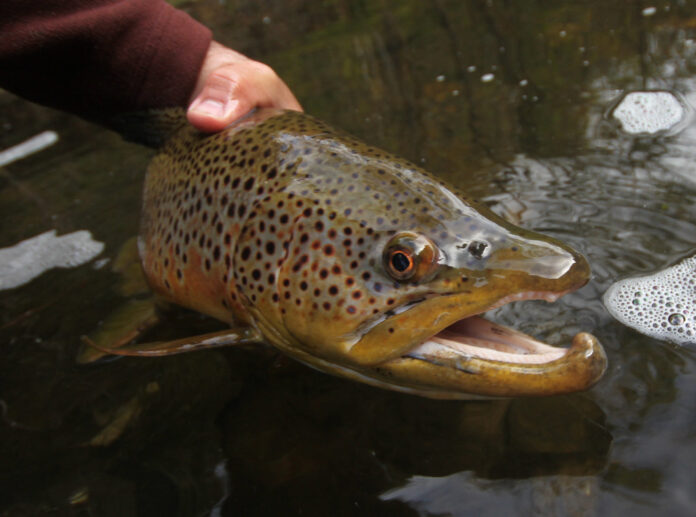Your chances of catching a gorgeous trout like this increase the longer your fly is in the strike zone.
Photo by Shawn Combs
There’s an old saying among fishermen: You can’t catch fish if your line isn’t in the water. I believe that this is one of the reasons that the less avid angler often outfished their more-experienced partner on float trips when I guided on the Yellowstone and in Alaska. Whereas the “experienced” angler recognized every great trout lie the boat floated past and felt the need to cast to all of them, the novice was generally more content to keep a given drift going as long as possible. Every time the avid angler picked up their line and started false-casting, they were taking themselves out of the game.
Novice fly fishermen should take this to heart . . . and take it to the extreme. Unless you are casting or changing flies, keep your fly in the water. If you need to adjust your sunglasses, take off your jacket, or blow your nose, don’t stop fishing. Simply let your fly drift, swing, and hang in the current. Anytime the fly is in the water, a fish might eat it.
This is true even when you’re moving to another spot (as long as difficult wading isn’t required). Cast your fly, and then work your way up- or downstream. If you’re walking upstream, your fly will be dragging behind you, and every longtime angler has a story about catching fish by “trolling” this way. If you’re walking downstream, stay several yards behind the fly, and let it drift naturally for as long as you can. When it starts to drag, cast again and repeat the process until you get to the next spot.
The first fly I ever tied was a traditional Maine pattern called the Devil Bug, which was taught to me by Jim Thibodeau, a fellow guide at Hubbard’s Yellowstone Lodge in Montana. Immensely proud of my new creation, I immediately took it down to the Yellowstone River for a test drive. After about 15 minutes of fruitless casting, however, I decided that the pattern was crap and I should change flies. As I perused my fly box, I allowed my line to hang in the current directly downstream. Before I could decide on a replacement pattern, a 17-inch brown whacked the dangling Devil Bug and hooked itself. Not a bad fish for my first self-tied fly, and I never would have caught it if my fly had been in my hand.
Credit: Source link































